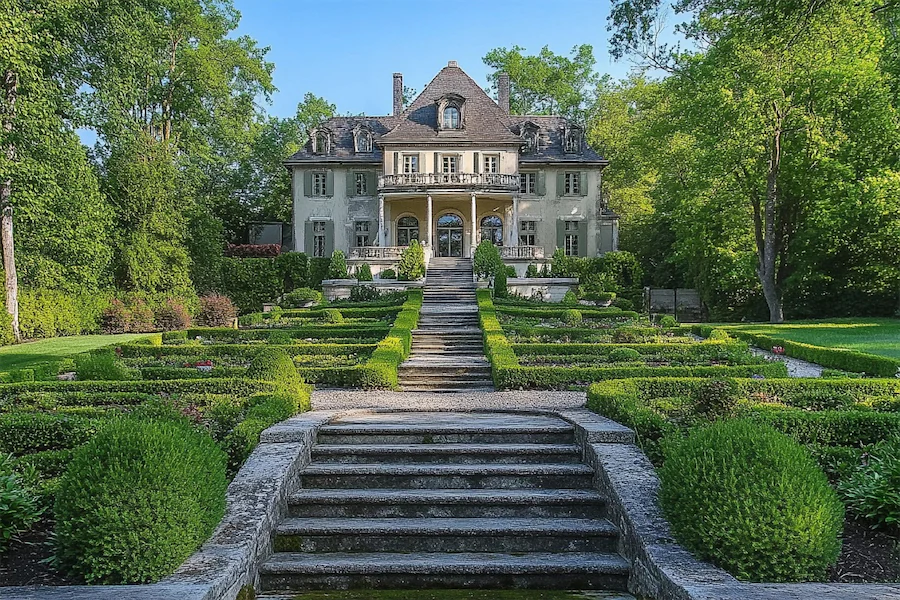The French formal garden, or jardin à la française, is a landscape design style that emphasizes symmetry, order, and the meticulous control of nature. This approach seeks to impose geometric patterns and a sense of grandeur upon the natural environment, creating a harmonious and majestic aesthetic.
History and Origins of French Formal Gardens
The origins of the French formal garden trace back to the Italian Renaissance, but it was in France during the 17th century that this style reached its zenith. King Louis XIV, aiming to showcase his absolute power and the glory of his reign, commissioned the landscape architect André Le Nôtre to design the gardens of the Palace of Versailles. Le Nôtre’s work at Versailles became the epitome of the French formal garden, influencing garden design across Europe.
Key Features of French Formal Gardens
French formal gardens are characterized by several distinct elements:
- Symmetry and Geometry: The layout is highly symmetrical, with geometric patterns dictating the arrangement of all components.
- Parterres: These are ornamental, highly manicured garden beds, often shaped into intricate designs and bordered with low hedges.
- Gravel Paths and Stone Elements: Gravel paths define walking areas and provide drainage, while stone steps and terraces add structure and elevation.
- Water Features: Fountains, reflecting pools, and canals are integral, adding movement and reflecting the surrounding beauty.
- Topiary and Sculpted Plants: Shrubs and trees are meticulously trimmed into precise shapes, demonstrating control over nature.
Applications of French Formal Gardens
Originally, French formal gardens adorned royal palaces and estates, serving as symbols of power and sophistication. Today, their influence extends to public parks, institutional grounds, and private residences worldwide. The principles of symmetry and order continue to inspire contemporary landscape architecture, reflecting a timeless appreciation for structured beauty.
Considerations When Creating a French Formal Garden
When designing a French formal garden, consider the following:
- Scale and Proportion: Ensure that the garden’s elements are proportionate to the surrounding architecture and landscape.
- Maintenance: Regular upkeep is essential to preserve the precise shapes of hedges, cleanliness of gravel paths, and functionality of water features.
- Plant Selection: Choose plant species that can withstand frequent pruning and shaping, such as boxwood for hedges and topiaries.
- Hardscaping Materials: Incorporate quality materials like stone and gravel to construct durable paths, terraces, and decorative elements.
Conclusion
The French formal garden represents a harmonious blend of art, architecture, and nature, meticulously crafted to evoke elegance and grandeur. By understanding its historical context, key features, and design principles, one can appreciate the enduring legacy of this garden style and its influence on landscapes around the world.
